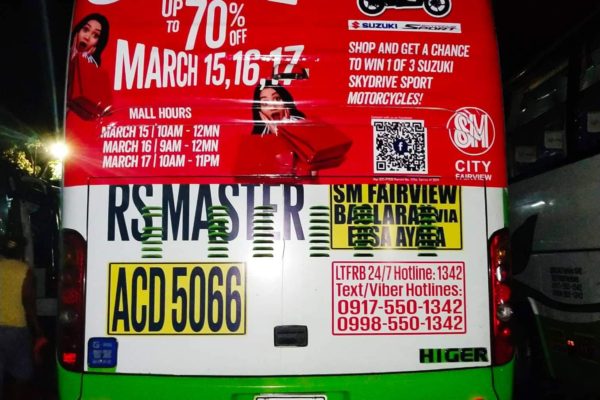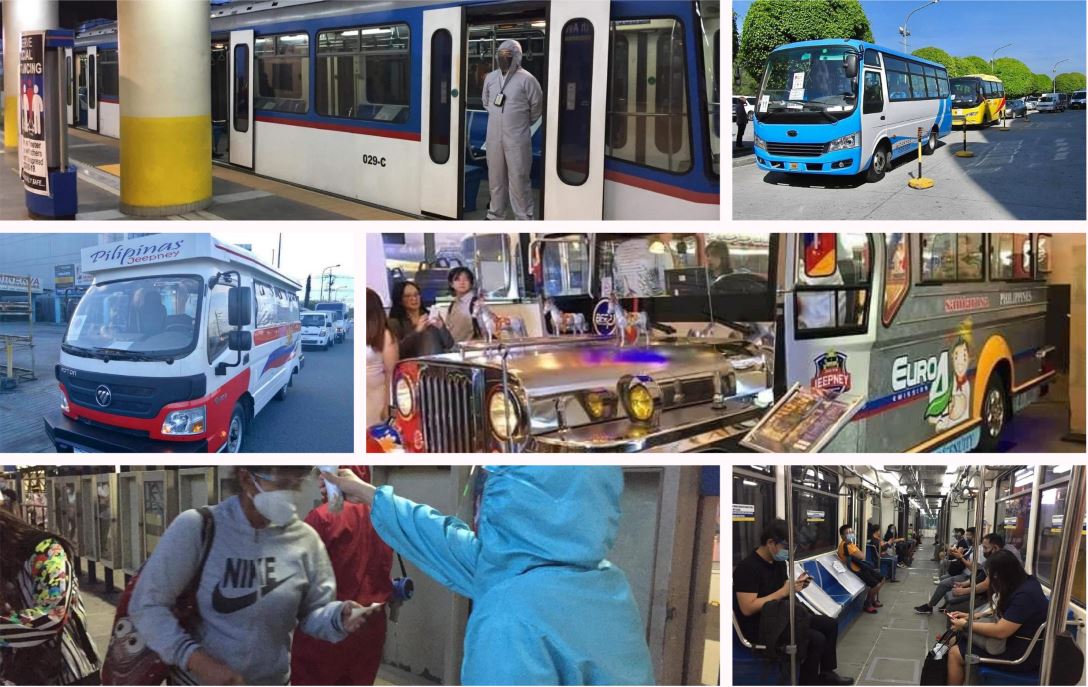Transit Advertising Philippines: Reach Hundreds Of Commuters Daily
Transit Advertising Philippines: Reach Hundreds Of Commuters Daily
Blog Article
Understanding the Role of Transportation Advertising in Enhancing Brand Presence and Customer Interaction
Transportation advertising has actually become an essential aspect in the marketing landscape, supplying unique chances for brand names to raise their presence and involve customers effectively. With the capacity to reach a captive and diverse audience during their daily commutes, these advertising strategies are not just concerning visibility; they are concerning producing purposeful connections with potential clients. As we explore the diverse benefits and cutting-edge methods within transportation advertising and marketing, it ends up being necessary to take into consideration exactly how these components collectively affect consumer perception and behavior, elevating concerns concerning their long-term effect on brand name loyalty.
Meaning of Transportation Marketing
Transit marketing refers to the method of promoting items, solutions, or brand names via promotions positioned in and around mass transit systems. This kind of advertising and marketing incorporates a variety of positionings, consisting of posters on trains and buses, digital displays at transportation terminals, and wraps on the outside of vehicles. It intends to get to a varied target market, maximizing the high foot website traffic related to public transportation.
Transportation advertising and marketing is purposefully positioned to record the attention of commuters, that usually invest significant time taking a trip or waiting. By incorporating ads right into the everyday regimens of people, brands can create a lasting perception and foster brand name recognition. The medium is specifically effective in city atmospheres, where public transport is a primary setting of traveling.
In addition, transportation advertising can promote local targeting, enabling companies to reach specific demographics based on transportation courses and terminal locations. As urban populaces expand and making use of public transportation increases, this advertising and marketing technique has acquired prestige as an essential element of integrated advertising and marketing strategies. The vibrant nature of transit advertising and marketing, combined with its capacity to involve customers in a captive setting, highlights its value in contemporary marketing techniques.
Advantages of Transit Marketing
The effectiveness of transit marketing exists in its capability to supply a multitude of advantages to brands looking for to enhance presence and involvement. Among the key benefits is the substantial reach it supplies; transit advertisements can successfully target diverse demographics across city locations, getting to both pedestrians and travelers alike. This wide direct exposure dramatically enhances brand understanding.
An additional advantage is the high frequency of perceptions. As transit automobiles follow well established courses and quit at multiple areas, they create repetitive direct exposure that reinforces brand name messages. This regularity fosters experience, which is critical in customer decision-making.
Transit advertising and marketing is likewise economical contrasted to other media platforms. Offered its large reach and capacity for high perceptions, brands commonly experience a lower price per thousand impressions (CPM), maximizing their advertising and marketing spending plan.
Moreover, transportation advertisements can create a sense of community connection. By aligning with local transit systems, brands can resonate with regional target markets and cultivate a sense of regional pride. This local technique improves brand name commitment and involvement, making transportation advertising an engaging selection for services intending to strengthen their existence in the marketplace.

Reliable Strategies for Transit Campaigns
To take full advantage of the impact of my explanation transportation campaigns, brand names must leverage tactical preparation and implementation customized to their target market. First, determining the group attributes of the target market using public transportation is vital. This enables brand names to produce personalized messaging that resonates with possible clients.
Next, choosing the ideal transportation mediums is essential. Whether using bus wraps, metro posters, or electronic displays, each medium has unique advantages that can enhance presence. For circumstances, dynamic visuals on bus wraps can stand out, while electronic advertisements can be upgraded regularly to show prompt promotions.
Furthermore, integrating a cohesive branding approach throughout transportation systems guarantees uniformity and reinforces the brand name's identification. Making use of memorable taglines and distinctive styles will reinforce brand name recall among travelers.
By employing these techniques, brand names can effectively harness the potential of transportation advertising and marketing, cultivating greater recognition and link with their target audience. Inevitably, a well-executed transit project can drive substantial growth in brand name visibility and consumer engagement.

Gauging Impact and Interaction
In examining the performance of transportation ad campaign, precise dimension of influence and engagement is necessary for brands seeking to enhance their advertising and marketing methods. Metrics such as reach, frequency, and impacts give fundamental data to examine presence. Examining these factors helps identify how numerous prospective consumers are revealed to the promotions during their day-to-day commutes.
Engagement can be additional determined with consumer communications, such as internet site traffic, social media points out, and straight responses to calls-to-action featured in the advertisements. Using devices like QR codes or distinct URLs can help with tracking of customer habits directly connected to transportation projects. Studies and feedback systems additionally act as useful approaches to collect qualitative data on customer try here perceptions and recall of the advertisement.
Moreover, advanced analytics and acknowledgment versions can associate transit exposure with subsequent buying habits, using insights right into the roi. By using a thorough strategy that incorporates quantitative and qualitative measures, brands can establish a nuanced understanding of their transit advertising influence. Eventually, this data-driven method allows brands to refine their campaigns, guaranteeing they reverberate successfully with target visit the site market and boost overall brand exposure.
Study of Effective Campaigns
Successful transportation ad campaign act as engaging examples of how reliable strategies can raise brand presence and involvement. Transit Advertising Philippines. One significant situation is the "I Love New York" project, which changed the city's photo and attracted millions of tourists. By using subway advertisements, signboards, and bus wraps, the campaign created a strong, cohesive brand identification, leading to a significant uptick in tourist and neighborhood organization patronage
An additional excellent campaign is Coca-Cola's "Share a Coke" campaign, which leveraged transit marketing to individualize the brand experience. By featuring preferred names on advertising materials across numerous transit platforms, Coca-Cola cultivated a much deeper emotional link with consumers, urging them to share their experiences on social networks.
Furthermore, the "Got Milk?" campaign successfully used mass transit advertisements to reach a broad audience, strengthening the message of the value of milk in a well balanced diet plan. The campaign saw a quantifiable increase in milk usage in target demographics.
These study highlight that when executed attentively, transportation marketing can substantially boost brand name visibility, foster customer interaction, and drive quantifiable results, showing its vital duty in modern-day marketing methods. - Transit Advertising Philippines
Conclusion
To conclude, transportation advertising and marketing acts as an important tool for boosting brand name visibility and promoting customer interaction. By using tactically positioned advertisements within mass transit systems, brands can successfully enhance and get to diverse audiences acknowledgment through constant exposure. The application of targeted messaging and ingenious methods better magnifies the influence of transportation projects. Inevitably, the capacity to measure involvement and analyze successful instance researches emphasizes the efficiency of transit marketing in driving brand name commitment and customer interactions.
Transportation advertising has emerged as a crucial component in the marketing landscape, supplying distinct opportunities for brands to elevate their exposure and involve consumers efficiently.In addition, transit advertising can assist in local targeting, enabling organizations to reach certain demographics based on transportation paths and station areas.In reviewing the performance of transportation marketing campaigns, precise dimension of influence and involvement is crucial for brand names looking for to maximize their marketing strategies.Successful transit advertising campaigns serve as compelling examples of how effective techniques can elevate brand visibility and interaction.In verdict, transportation marketing offers as a crucial device for enhancing brand exposure and fostering consumer engagement.
Report this page